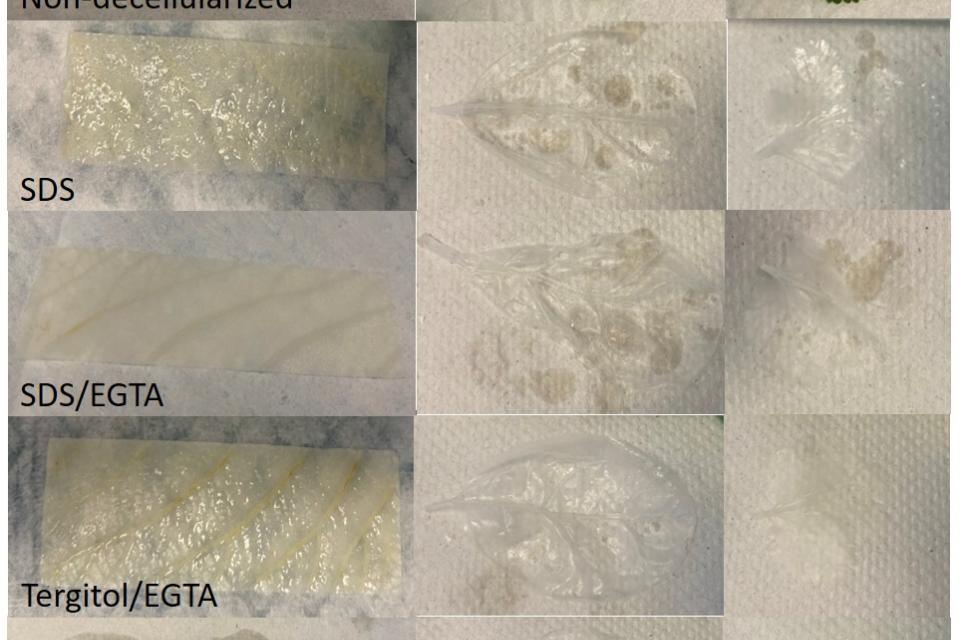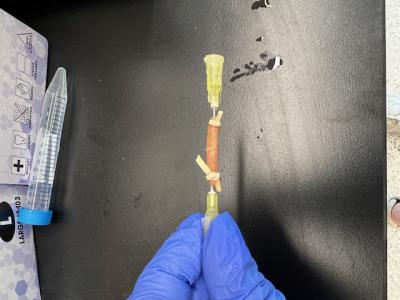Datasets
Standard Dataset
Vascular Grafts Engineered from Decellularized Leaves
- Citation Author(s):
- Submitted by:
- Nicholas Merna
- Last updated:
- Fri, 03/21/2025 - 07:03
- DOI:
- 10.21227/m5at-nd27
- Data Format:
- Research Article Link:
- Links:
- License:
 201 Views
201 Views- Categories:
- Keywords:
Abstract
Despite advances in vascular replacement and repair, fabricating small-diameter vascular grafts with low thrombogenicity and appropriate tissue mechanics remains a challenge. A wide range of platforms have been developed to use plant-derived scaffolds for various applications. Unlike animal tissue, plants are primarily composed of cellulose which can offer a promising, nonthrombogenic alternative capable of promoting cell attachment and redirecting blood flow. By taking advantage of the biocompatibility and mechanical properties of cellulose, we developed small-diameter vascular grafts using decellularized leatherleaf viburnum and cross-linked gelatin. Different terrestrial plant leaves (leatherleaf, spinach and parsley) were decellularized with sodium dodecyl sulfate (SDS), egtazic acid (EGTA) and/or Tergitol, followed by a bleach and Triton X-100 clearing solution, and then evaluated for decellularization efficiency, mechanical integrity and recellularization potential.Hematoxylin and eosin (H&E) staining and DNA quantification revealed successful removal of cells in all leatherleaf conditions. Methods of 3D graft fabrication were evaluated, and leatherleaf scaffolds maintained suitable tensile and rupture strength properties. 2D scaffolds and 3D grafts were seeded with rat endothelial cells. Cells remained viable for over 14 days with cell densities comparable to other natural and synthetic scaffolds. This study demonstrates the potential of cost effective and readily available decellularized plants to generate small-diameter vascular grafts capable of recellularization and with suitable mechanical properties.
Data, images and protocols for the article entitled "Small-Caliber Vascular Grafts Engineered from Decellularized Leaves and Cross-linked Gelatin" can be found in the zip file "All Images and Protcols" as part of the Data Management and Sharing Plan for award 1R15EB033168-01. All acronym descriptions can be found in the pdf article included in this folder. For example, sodium dodecyl sulfate (SDS). For additional information, please contact the PI, Dr. Nicholas Merna, at nicholas.j.merna@hofstra.edu








